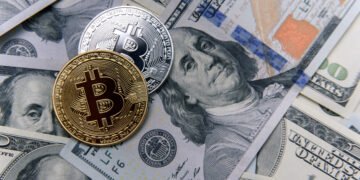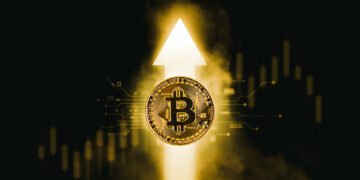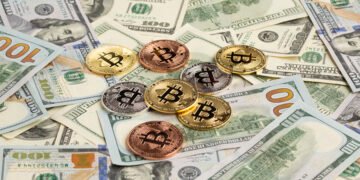In a stark warning about America’s financial future, BlackRock CEO Larry Fink used his highly anticipated annual letter to investors on Monday to sound the alarm on how mounting U.S. debt could potentially threaten the dollar’s global reserve currency status. The letter from the head of the world’s largest asset manager pointed to digital assets like Bitcoin as potential beneficiaries if America fails to address its fiscal challenges.
The Dollar’s Precarious Position
Fink emphasized that while the United States has enjoyed tremendous benefits from the dollar serving as the world’s reserve currency for decades, this privileged position isn’t guaranteed to continue indefinitely. He highlighted a particularly troubling statistic: since Times Square’s famous debt clock began ticking in 1989, the national debt has grown at three times the pace of GDP.
The immediate consequences of this fiscal imbalance are already becoming apparent. This year alone, U.S. government interest payments will exceed $952 billion, surpassing even defense spending. Fink painted an even more concerning picture of the future trajectory: without meaningful intervention, by 2030, mandatory government spending combined with debt service payments will consume all federal revenue, creating what he described as a “permanent deficit.”
The accompanying chart included in his letter visually represented the dramatic rise in U.S. federal debt as a percentage of GDP, underscoring the magnitude of the challenge facing policymakers.
Bitcoin’s Potential Role
Despite his warnings about cryptocurrency potentially undermining America’s economic advantages, Fink was careful to clarify his stance on digital assets. “I’m obviously not anti-digital assets,” he stated. He articulated a nuanced position that acknowledged two seemingly contradictory truths: decentralized finance represents “an extraordinary innovation” that makes markets “faster, cheaper, and more transparent,” while simultaneously posing a potential threat to America’s economic advantage “if investors begin seeing bitcoin as a safer bet than the dollar.”
This assessment reflects a significant evolution in Fink’s thinking about digital assets. Just a few years ago, BlackRock maintained a much more cautious approach toward cryptocurrency, but the company has since embraced Bitcoin as a legitimate asset class worthy of institutional investment.
BlackRock’s Bitcoin ETF Success
The letter also served as an opportunity for Fink to highlight BlackRock’s remarkable achievement with its U.S. spot Bitcoin exchange-traded fund, IBIT. The ETF has become the largest launch in history, accumulating over $50 billion in assets under management in less than a year since its January 2024 debut.
The statistics Fink shared were impressive: IBIT generated net inflows of $37.4 billion in 2024 alone and over $40 billion since its launch. This performance has established BlackRock as the dominant player in the Bitcoin ETF market, far outpacing its closest competitor, Fidelity’s FBTC, which has attracted $11.5 billion in net inflows according to data compiled by The Block.
Fink noted that IBIT ranked as the third-highest asset gatherer across the entire ETF industry, trailing only S&P 500 index funds. Perhaps most revealing about the democratizing nature of this investment vehicle was Fink’s disclosure that more than half of IBIT’s demand came from retail investors, with three-quarters of those investors having never owned an iShares product before.
This success has prompted BlackRock to expand its Bitcoin offering beyond U.S. borders, with the company introducing exchange-traded products in both Canada and Europe.
Earlier this year, Fink made headlines when he suggested that if investors broadly adopted a portfolio allocation of 2% to 5% to Bitcoin, the cryptocurrency’s price could potentially reach as high as $700,000 in the future.
The Promise of Tokenization
Looking beyond Bitcoin itself, Fink devoted significant attention to the broader concept of tokenization—the process of converting real-world assets like stocks, bonds, and real estate into digital tokens that can be traded online via blockchain technology.
He framed tokenization as a transformative innovation comparable to the leap from postal services to email for investing. This technology enables assets to move “directly and instantly,” bypassing traditional intermediaries that have historically added friction, time delays, and costs to transactions.
“Every stock, every bond, every fund—every asset—can be tokenized,” Fink declared. “If they are, it will revolutionize investing.” He outlined several potential benefits of this revolution:
- Markets could operate continuously without needing to close
- Transactions that currently take days to settle would clear in seconds
- Billions of dollars currently immobilized by settlement delays could be immediately reinvested back into the economy, generating additional growth
Fink emphasized that tokenization represents a democratizing force in investing by enabling fractional ownership, facilitating easier shareholder voting, and broadening access to higher-yield investments that have traditionally been reserved for institutional or wealthy investors. This technology has the potential to make sophisticated investment assets accessible to a much wider range of individual investors.
Historical Context and Future Outlook
The letter placed these technological developments within a broader historical context. Fink reflected on the historical development of capital markets, noting their crucial role in expanding prosperity and helping individuals build wealth through investments over time.
He discussed the need for continued innovation to bridge the persistent gap between public and private markets—a divide that has often prevented smaller investors from accessing some of the most promising investment opportunities. Fink emphasized the importance of expanding investment opportunities more broadly, including enabling retail investors to benefit from asset classes typically reserved for the wealthiest individuals and institutions.
While acknowledging the widespread economic anxiety currently affecting many Americans and investors globally, Fink sought to provide a measure of reassurance. He noted that such periods of uncertainty are not unprecedented in economic history, and expressed confidence that, as in the past, the economy will eventually stabilize due to human resilience and the fundamental strength of capital markets.
A Balancing Act
Fink’s letter represents a delicate balancing act between highlighting the potential of new financial technologies and warning about the consequences of fiscal mismanagement. As the leader of an asset management firm with over $10 trillion under management, his perspectives carry significant weight in financial markets and policy discussions.
The letter implicitly acknowledges that we may be at a pivotal moment in financial history—one where traditional financial systems and emerging digital alternatives are increasingly intertwined, and where responsible management of both will be crucial for economic stability and growth.
For investors, Fink’s message suggests a future where digital assets and tokenized traditional investments may play an increasingly important role in diversified portfolios. For policymakers, it serves as a reminder that fiscal discipline remains essential even in an era of technological innovation.
As financial markets continue to evolve, Fink’s observations highlight the dynamic interplay between macroeconomic factors, technological innovation, and investment strategies that will shape the investment landscape in the years to come.
His warning about Bitcoin potentially challenging the dollar’s reserve status represents perhaps the most striking element of the letter—suggesting that even as traditional financial institutions embrace digital assets, they remain acutely aware of both their transformative potential and their capacity to disrupt the established economic order.
Acknowledgment: This article was written with the help of AI, which also assisted in research, drafting, editing, and formatting this current version.







